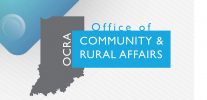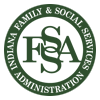Doing Something Isn’t Always The Best Action
By Jesse Kauffman, Lead Consultant, Everyday Business Resilience Group
Contact Jesse at 812-568-0515 and jesse.kauffman@everydaybusinessresilience.com
One of the reasons I have a passion for resilience and crisis planning is because working through potential situations before they happen enables people and organizations to make better decisions during an actual crisis or emergency. In an emergency, there is often a bias for action, and if you haven’t worked through what those actions should be beforehand, and who should be performing those actions, chances are you’ll make things worse simply because you felt the need to do something, that doesn’t help the actual emergency you’re trying to work through.
Each of us has a natural tendency towards one end or the other of, let’s call it the “Take Action†spectrum. Some of us have a bias for quick action, some of us have a bias for analysis paralysis. Like everything in life is at the extreme of either approach is rarely optimal, which is why pre-planning actions to various scenarios for business continuity and crisis management purposes, or for business growth initiatives, is so critical. If your goal as a business is to minimize surprises and interruptions and maximize efficiency and growth opportunities, it is paramount that you incorporate a planning process into your operations, and most importantly, that you FOLLOW THAT PROCESS when the world throws you a curveball.
Why is it so important to rely on the prework you’ve done? Because choosing to move forward with an action to appear to be doing something has a much higher likelihood of causing negative impacts to your organization in the long run. For a perfect example that we can all relate to, let’s look at mask mandates and the pandemic. Â
Prior to 2020, it was widely accepted, and included in federal and state government and organizational crisis management plans, and in hospitals, that masks are not effective at slowing the spread of viruses. And at the beginning of the COVID-19 panic, the approach to using masks was in-line with the pre-pandemic planning and scientific understanding of mask effectiveness. But as the pandemic grew in size and severity, the pressure on the government, business, and political leaders to “do something†also grew. Â
Unfortunately, the metrics used to judge the performance of those leaders aren’t built on long-term outcomes but are instead built on short-term changes. This made mask mandates an easy win for those leaders, as masks are easily visible and make people feel like they’re doing something. This despite the scientific evidence available then and now pointing out that masks are at best minimally effective only in highly controlled laboratory situations while providing no tangible protection in real-world use cases. Â
The primary studies used to justify widespread masking look at very limited time scales all conducted only between March and June of 2020, with small data sets, no control groups, and a study structure heavily biased to show a favorable benefit to masking. Yet even with their built-in statistical biases, they show little or no real-world impact when using masks, especially among the low-risk demographics like children and young adults who are most likely to be required to wear masks due to school or work requirements. Â
Studies conducted with far more scientific rigor to eliminate common causes of statistical biases show no benefit to masks for reducing viral spread in situations outside of tightly controlled laboratories. But in mid-2020 with the pandemic, leaders were rewarded for showing that they were willing to try anything, to “take actionâ€, not for taking a measured approach consistent with their existing planning and long-settled medical knowledge of how viruses spread.
Now we’re two years of masking with no measurable benefit to the issue they were supposed to help, but with tremendous amounts of the measurable negative long term impacts to the educational and emotional development of kids and young adults, expanded negative social impacts, and alienation among grown adults, negative employment hiring and retention efforts, and overall an increased and growing levels of apathy and animosity towards other pandemic related mitigation efforts that have been shown to truly be helpful to at-risk demographics.
The learning I’m hoping to share is that if you’ve taken the effort to do thorough planning when it’s time to execute those plans, it’s better to be patient and follow the process because as soon as you abandon the process that you established, the likelihood of causing more harm than good just to do something increases exponentially. Be patient, trust yourself and the work you’ve done to prepare, and stay the course. You, your organization, and the stakeholders that depend on you will come out ahead in the long run.
FOOTNOTE: Jesse has 17+ years of engineering, project management, capital management, maintenance management, crisis management, and business continuity experience in global industries including, appliances, plastics, nutrition, and pharmaceuticals, across all aspects of business operations. He is currently helping companies ranging from large global corporations to small local businesses. He and his wife, Josi, are proud parents of 3 amazing kids and are trying to live the American dream on the West Side of Evansville.





